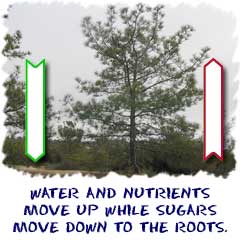Today's guest post comes from a community member and parent who attended one of our homeschool programs last month. Melissa writes the blog Cookies, Crayons, Classes & Chaos, and she was generous enough to write a post describing what she learned when her homeschool group attended a maple syrup tour at Fenner! We can't fit her entire post here, but be sure to visit the link at the bottom to see her entire post. She gives some great information about how maple syrup is made, as well as lovely photographs of the animals they encountered on their trip to Fenner.Well, that was an interesting homeschool tour today!! Usually when our family has gone to the Maple Syrup festivals in the spring we want to cuddle up next to the warm fires where the syrup is boiling. Not so much today. Today, the campfire evoked thoughts of hot dogs, s'mores, and swimming holes, and we could use the smoke to keep the mosquitoes away instead of warming ourselves. Hard to believe it was almost 80 degrees! I suppose this unseasonable warm weather is going to make Maple Syrup expensive since it cut the sap collecting season short.
Tree Anatomy
Lynette first taught everyone about tree anatomy using a nifty felt tree with felt "flappy" layers that peeled back to reveal each layer.
 |
| Learning about tree anatomy from Lynette using the felt tree |
We learned about the trees layers starting from the outside: Bark, cambium, xylem, phloem, heartwood.
The tree rings are formed from the cambium when the xylem dies each year.
Learn more about how tree rings are formed at Real Trees 4 Kids.
 |
| Diagram from Tree Boss |
"While the center of the trunk is usually "just wood" (Heartwood), the inner bark consists of living tissue. These layers are known as the Phloem and the Cambium, with the cambium being the growth layer....
"The xylem transports water and nutrients up the tree, and phloem transports products of photosynthesis back down." -- Tree Boss
How Sap Flows
We learned that the sap would freeze during the winter and make the tree "explode". So the tree sends all its sap to the roots during the winter.
When the weather warms up during the day the sap rises and then goes back down to the roots when the temperatures go below freezing at night.
Sap, the tree's nutrients, move up and down the tree in a loop during this cycle of warm and cold periods.
 |
| Biology 4 Kids |
To read the rest of this wonderful post, click here.


No comments:
Post a Comment